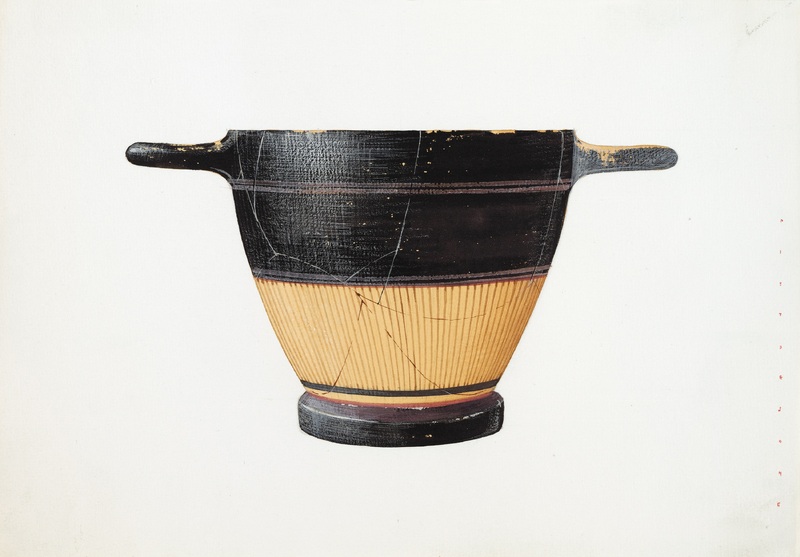The “Rawson Deposit”
Carl W. Blegen relates the discovery of a "large mass of pottery” in his account of the 1925 season, conducted between November 30th and December 24th (Blegen 1926, 131). He records that the wife of one of the workers, Mrs. Spiro Peppa, brought the team a few sherds uncovered by plowing. When the team explored the location, they found what Blegen describes as a “deposit of votive offerings removed from a shrine” in a pit (Blegen 1926, 131). Although most had been broken, Blegen notes a few survived intact. They deposit consisted of “several hundred vases, cups, skyphoi, jugs, aryballoi, dishes, etc.” as well as terracotta figurines (Blegen 1926, 132).
Nothing else is written about the deposit in either Blegen’s 1926 article or in his 1927 report. No record states who he had planned to write about it. At a certain point, a plan for publication – specifically a book – was conceived, and the name next to the chapter about the pottery was simply “Rawson.”
Marion Rawson was not a part of this excavation, but she joined the UC-sponsored team at Blegen’s Prosymna campaign in 1928, the last year he dug there and the first year that he did so as a UC Classics member. We know about her first day digging from her 1928 personal diary, and she also records in her 1929 diary that she spent time at the National Museum in Athens working with the Prosymna pottery. Her activities in 1930 and 1931 are not known, but she joined the first season at Troy in 1932, and worked there for all seven seasons, ending in 1938.
Rawson’s connection with Nemea first appears in Nemea Notebook #6, in which she both continues a catalogue of the pottery that another person had started and also records photographs taken of the material. The dates of the photographs, according to the notebook, were July 10 and 13, 1933, only a few days after she departed from Troy. More photographs were taken on March 23 and 24, 1934, and immediately after this list was a list of 17 watercolors, presumably by Piet de Jong. We can conclude that de Jong was present in 1934, and Rawson studied the pottery in 1933 after leaving Troy, and in 1934, possibly before leaving for Troy in April of that year.
From the above information, Rawson must have joined the Nemea team sometime after 1929 and 1933. In addition to a catalogue and photographs of the material, she also wrote a 40-page manuscript about it; the date of the manuscript is not known but clearly post-dates 1934 since she references the watercolors by de Jong. We do not know why she abandoned the project after writing the manuscript. Her role at Troy and the increasing demands on her time for that project is one possibility. Another is that, aside from Blegen, no one else had submitted any report of material that they had agreed to study and publish. Like Blegen’s work, Rawson’s would wait for another person to study and publish the deposit.
This fate of this deposit and the various scholars who worked on it after Rawson’s work is outlined by Signe Barfoed both in her 2009 MA thesis and in her 2017 Hesperia article. More specific information about the find and excavation of the pottery, as well as the analysis of the pottery itself, also can be found in her work. Her label for the deposit – the “Rawson Deposit” – is retained here.


